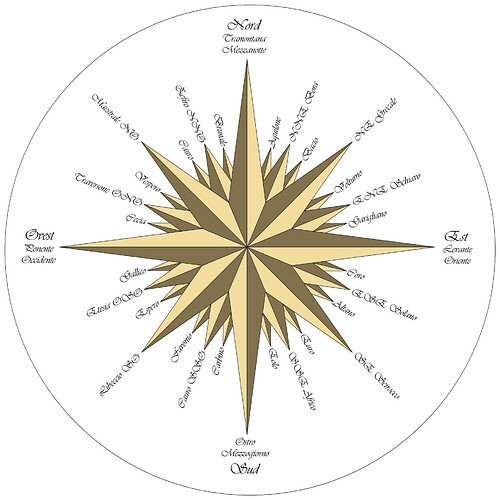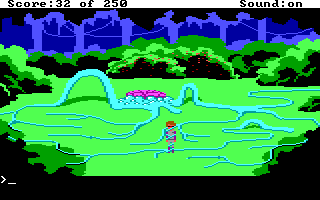That’s an awesome mnemonic! I’m a weirdo for whom the compass directions are by far the most intuitive way to navigate – like, I get around cities by figuring out which way the subway line I’m on is heading, keep mental track of that direction as I exit the station, and then boom, I know which way everything is once I pop up onto the surface – so it’s not personally useful for me, but I appreciate the philological pun-iness.
to say directions:
say "Not Every [one of]Snake[or]Spider[or]Slug[or]Seal[or]Scorpion[or]Sea lion[or]Stegosaurus[or]Snapping turtle[or]Skunk[or]Squirrel[or]Stag beetle[purely at random] Would Use Drugs."[directions].
Inside Of Your Purple Pontoon While Playing Scrabble Amongst Friends
“Your” is a cheat, of course
Don’t forget the other classic directions: IN, OUT, XYZZY, PLUGH, and PLOVER.
PORT, STARBOARD, and WIDDERSHINS.
I was actually working on a vehicle combat IF game, which focused on a kind of tank found in my usual sci fi universe. The idea is it’s effectively a mobile barracks in an era where effective armor was rediscovered. It takes the role of a sort of land-ship, and supports augmented infantry that have made the jeep and APC both obsolete.
Anyway, the point I’m trying to get to is that each vehicle of the game was made of multiple connected rooms, and the vehicle itself could rotate its parts to point in the cardinal directions, so I was using shipboard directions to moving within the vehicle itself, because “aft” could mean north, south, east, or west, depending on the rotation of the vehicle.
I was very thankful that Adv3Lite seemed to support this quite smoothly.
there’s also the original wind-based compass rose, the one with the 32 Mediterrannean winds:
(incidentally, a work tailored for ALAN…)
Best regards from Italy,
dott. Piergiorgio
No, but this was! (Art commissioned by me, and based closely off of my design, but I didn’t actually paint the final picture. I wrote all the music, though!)
My wife identified the same pain point. I first tried improving things by always displaying a compass rose in the margin (in the Libonotus Cup) which helped a bit. Then I tried putting the whole map in the margin (Dessert Island Adventure) and that helped a lot! I’m pretty sure that moving forward I’m going to keep a map on screen in my games whenever navigation isn’t trivial.
![]()
That’s fantastic!
Something I really wanna do it draw up like a professional-looking visitor’s map for the station my game takes place in. There aren’t really gonna be any locations that would be spoilers and such. I’d put a compass rose in the corner as well.
I also think I’ll create a version for screen readers that describes the layout, so blind players have the same info as the map readers.
Heh, I’m the same. I can recite from memory the maps of most IF I’ve ever played.
A few years ago I took my first trip to NYC and I travelled all over the city just by knowing the line numbers and where I wanted to go. Everytime I exited a station I had a mental model of where everything was in relation to me. I quite enjoyed the NYC subway.
I think this needs to be signposted, not outlawed. Oftentimes gratuitous or humorous deaths can be part of the fun, especially if the undo and save functions are preserved, making it fairly easy to chuckle, backstep, and carry on.
In fact, done in the right light, they can really help make the game, and fans sometimes really appreciate the humor and creativity put into them.
Good. You’ve succeeded in establishing contact with one of this planet’s life forms, and it looks like you’ll get to examine it up close and personal. The giant root-looking thing is giving you a guided tour of its digestive system.
What you experience next is too horrible to describe. Let’s just say that you die as a result. You are dead. Trust me.
It may please you to know that, during the night, you didn’t digest well. For awhile gastric distress made it extremely unpopular with the other root monsters.
Depending on the system, that might count as “warning” - while nothing in writing mentions the possibility of a fatal hazard, there is a graphical depiction of a bunch of visible lines/tendrils/roots/some things strange and blue, stretching out from what appears to be an alien. Maybe stepping on it won’t kill me, but the alien was never likely to thank me for it ![]()
Sierra broke Graham Nelson’s rule about unwarned killing plenty of times, but undercluing of the solution is more likely to be a problem for the modern audience than the danger not being indicated.
(This is also a reminder that warnings for game-overs can take a variety of forms, and that one appropriate to the puzzle and the game should be selected).
Which genre do you mean? Hidden object games?
Sure. ![]()
Whereby I must admit: I still don’t like searching for any objects in images, but the methods of making the objects disappear in the first place I find quite remarkable.
methods of making the objects disappear
It’s an interesting evolution, from parser-based text adventures to point-and-click to hidden object games.
And that gives me an idea… ![]()
![]()
I think this needs to be signposted, not outlawed. Oftentimes gratuitous or humorous deaths can be part of the fun, especially if the undo and save functions are preserved, making it fairly easy to chuckle, backstep, and carry on.
Although the example you’ve posted (I believe from Space Quest) is a Sierra game and they were kind of the trope-maker of “unnecessarily stupid die and reload situations.” While I think Space Quest did have some fun with this - this death is well-written at least as opposed to one of the King’s Quest games which let you walk off a cliff and then sort of berated you for being stupid and doing so. Why not just make an invisible wall or justify it by adding a teeny fence or a protagonist who says “I’m not throwing myself off the cliff here.”?
This exact death was parodied in a Monkey Island game - Guybrush fell, you got a low-res "Oops, looks like you did something stupid “Abort, Restart, Load?” box for a second before Guybrush was flung back up onto the cliff, dryly remarking, “Rubber tree.”
It’s an interesting evolution, from parser-based text adventures to point-and-click to hidden object games.
And that gives me an idea…

Actually hidden object games are huge and many have developed with extensive painterly graphics, cutscenes, competent plots and voice acting, and lots of “busy box” elements. Like you might be searching a cluttered attic for a key to open the door and escape or find five components for a spell you need to cast to advance the story.
Considering that IF is lots of “pick up everything that isn’t nailed down” it makes sense that hidden-object games can make great use of that trope. Scanning a horror-vacuii image for what you need is kinda the physical realization of SEARCH/EXAMINE.
Scanning a horror-vacuii image for what you need is kinda the physical realization of SEARCH/EXAMINE.
Yes, the Myst genre was the first elaboration of this: look around the world and try to spot interesting machines or objects that you might want to zoom in on.
(Point-and-click games tended to have small stylized sprites that called attention to themselves, just because they were low-resolution. But there was still an element of observing the world.)
If hidden-object games are the extrapolation of hunt-the-pixel into a fun mechanic, then there must be a parallel extrapolation of guess-the-word in parser IF. You think The Space Under the Window fits that bill? Or Her Story?
If hidden-object games are the extrapolation of hunt-the-pixel into a fun mechanic, then there must be a parallel extrapolation of guess-the-word in parser IF. You think The Space Under the Window fits that bill? Or Her Story?
I was actually just thinking about this based on the previous comments too! I think these come close, but I wonder whether a penalty for mis-clicking, so you can’t just lawnmower the whole screen/text, is something you’d need to import to a piece of IF in order to get the vibe of a hidden object game? Both Window and Her Story have opportunity costs to a certain extent, but nothing that judges chosen words as right or wrong. It’s interesting to think about a design that prompts you in an indirect way for what words to pick out without it being either too trivial or too punitive…

